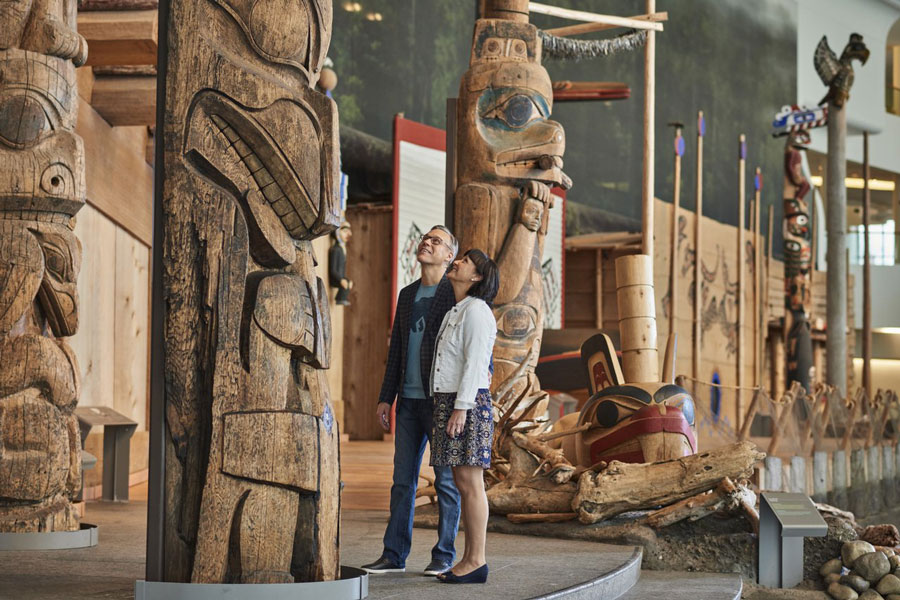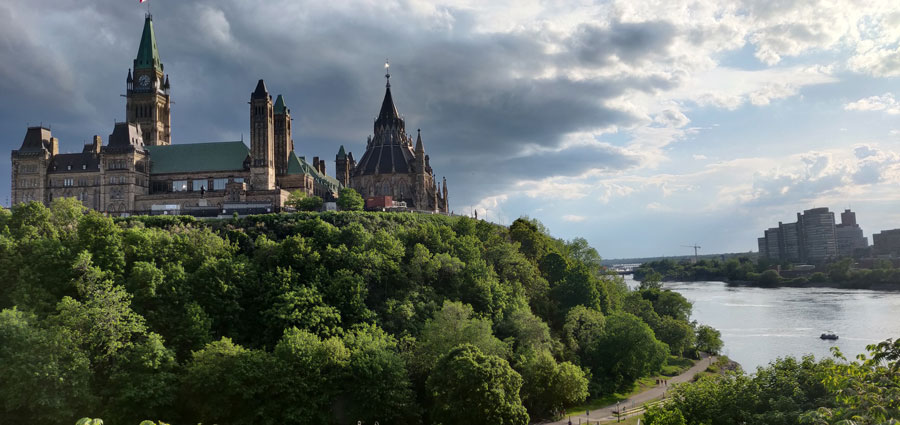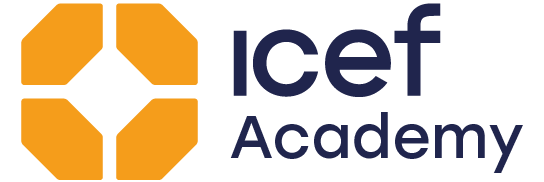B1. History, Economy, and Government
History

Canada’s first inhabitants are collectively known as First Nations. These peoples spanned the entire territory of modern-day Canada and had unique vibrant cultures and economies. Beginning in the 1500s, French and British colonizers began colonizing parts of what is now known as Canada for their respective monarchies. Even today, much of the land on which Canadian cities are built is considered unceded and it is now customary to note this history and the Nations who used to occupy the land at the start of many public events or meetings in what is known as a “land acknowledgement”.
From 1864 to 1867, representatives of Nova Scotia, New Brunswick, and the Province of Canada—with British support—worked together to establish a new country. These men are known as the Fathers of Confederation. They created two levels of government: federal and provincial.
The old Province of Canada was split into two new provinces: Ontario and Quebec, which, together with New Brunswick and Nova Scotia, formed the new country called the Dominion of Canada. Each province would elect its own legislature and have control of such areas as education and health.
The British Parliament passed the British North America Act in 1867. The Dominion of Canada was officially born on July 1, 1867. All remaining provinces joined Confederation one by one in the years to come. Newfoundland and Labrador is Canada’s newest province, having joined Confederation in 1949. Canada also has three territories: Northwest Territory, Yukon Territory, and Nunavut.
In 1982 the country formally severed its legal dependence on the British Parliament with the Canada Act and gained its own constitution and the important Charter of Rights and Freedoms. Today’s Canada enjoys strong historical links with Britain but has more direct ties with the US (its largest trading partner), though its foreign policy and political structure are distinct.
Canada was a founding member of NATO, the United Nations, the Commonwealth and La Francophonie.
Economy

One of the world’s wealthiest major industrialized countries, Canada has always been a trading nation and commerce remains the engine of economic growth. It is a member of the G7, the G20, the Organization for Economic Co-operation and Development (OECD), the United Nations (UN), the World Trade Organization (WTO) and many other international bodies.
Canada’s economy includes three main types of industries:
- Service industries provide thousands of different jobs in areas like transportation, education, health care, construction, banking, communications, retail services, tourism, and government. More than 75% of working Canadians now have jobs in service industries.
- Manufacturing industries make products to sell in Canada and around the world. Manufactured products include paper, high technology equipment, aerospace technology, automobiles, machinery, food, clothing, and many other goods. Canada’s largest international trading partner is the United States.
- Natural resources industries include forestry, fishing, agriculture, mining, and energy. These industries have played an important part in the country’s history and development. Today, the economy of many areas of the country still depends on developing natural resources, and a large percentage of Canada’s exports are natural resources commodities.
While Canada boasts a highly educated workforce and a diversified economy, it is unusual among developed nations in the continuing importance of its natural resources sector (e.g., forestry, mining, energy)—even as it is one of the world’s most computer-literate and technologically sophisticated markets.
The Canadian Dollar is one of the most stable currencies in the world. Unless otherwise specified, all dollar figures presented throughout this course are in Canadian Dollars (CAD). You can check the current exchange rates for your local currency with this convenient currency converter from the Bank of Canada.
Government
Canada is a federal parliamentary constitutional monarchy. Though the Governor General is officially the representative of Queen Elizabeth II and serves as Head of State in Canada and abroad, Parliament—which includes the Canadian House of Commons and Senate—is sovereign, governed by the parliamentary process laid out in Canada’s constitution.

The Canadian Prime Minister is the leader of the political party whose representatives were elected to the most seats in the House of Commons and is therefore considered to be the head of government. The Prime Minister appoints Ministers to his or her cabinet, which is the primary collective decision-making unit in the Canadian parliament. While Canada’s two main political parties tend to go back and forth in terms of who is in power, and other political parties are engaged in the democratic process, Canada’s government is overall incredibly stable and secure.
Education and Health care are provincial, so systems for both are slightly different in each province. All are extremely high quality and comprehensive in spite of the different jurisdictions.
